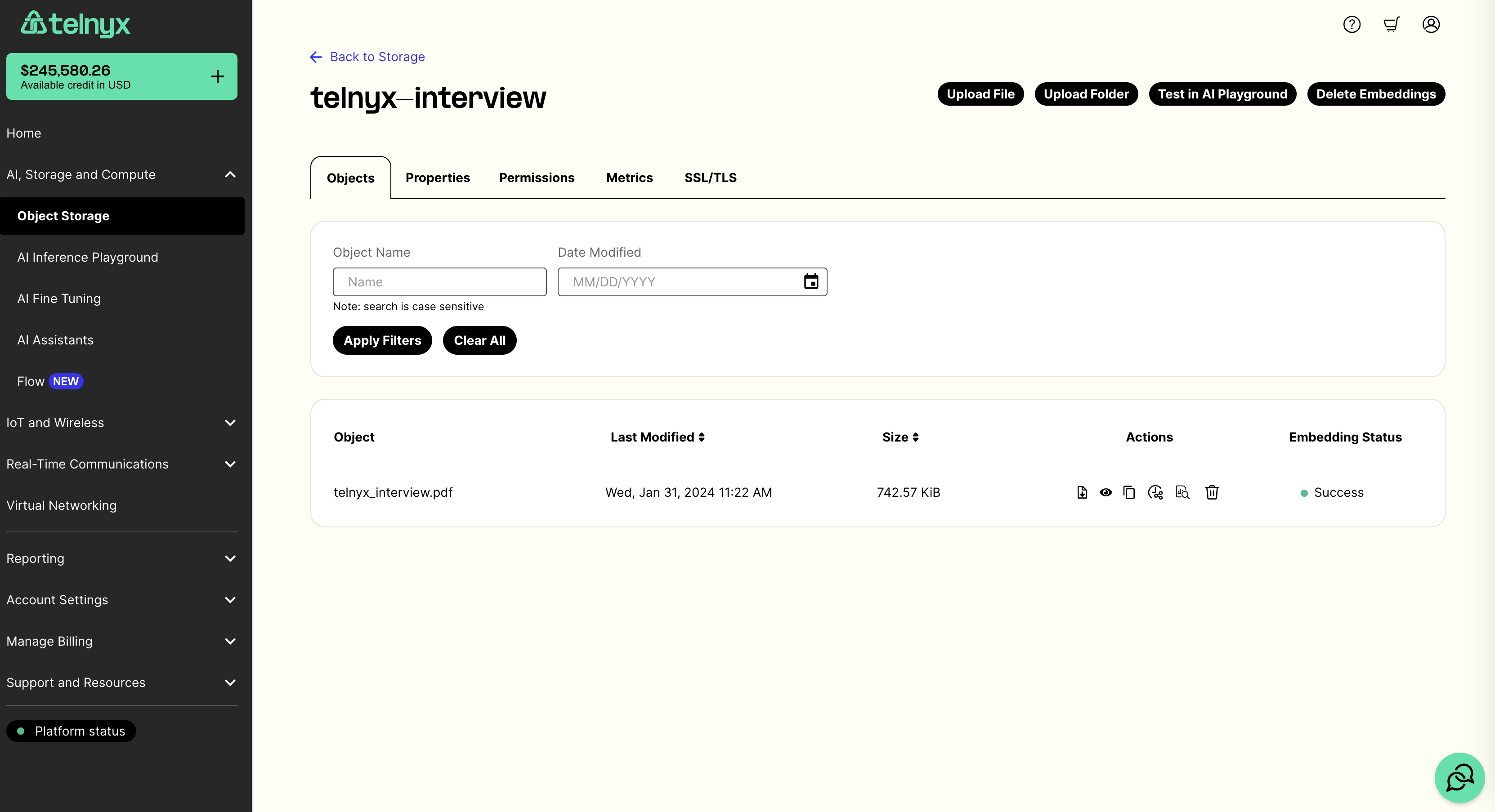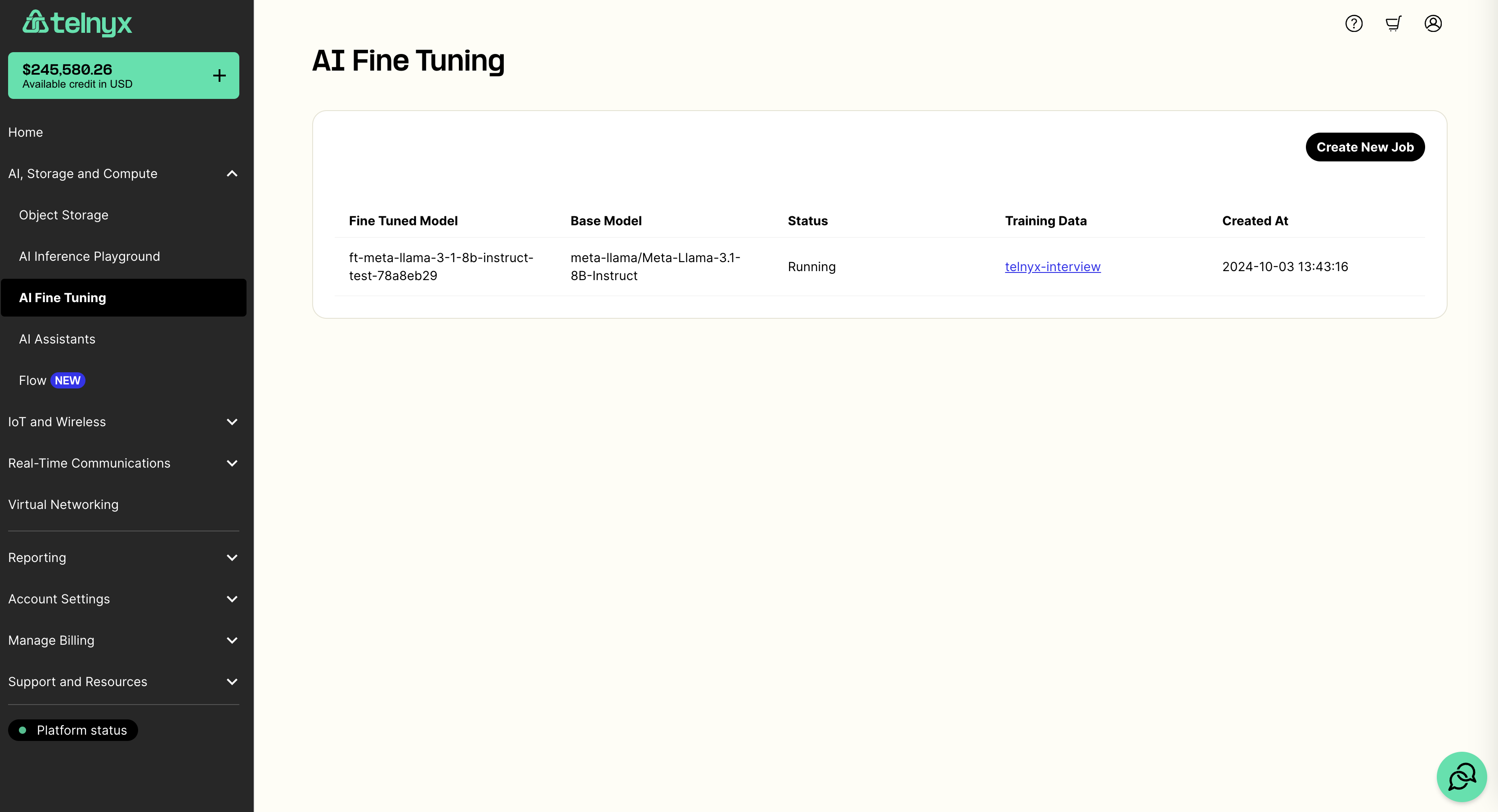- Upload documents to Telnyx Storage
- Customize a language model for your unique needs, using those documents
- Chat with this fine-tuned language model in the portal or via API
.jsonl training file as input.
Unlike most fine-tuning providers, Telnyx will also use AI to generate a training file from your raw documents automatically. This is the workflow covered in this tutorial.
Upload your documents
You can upload objects to Telnyx’s S3-Compatible storage API using our quickstart or with our drag-and-drop interface in the portal.
Fine-tune a language model on your documents
Once you’ve uploaded your documents, you can fine tune on them via API or by navigating to the fine-tuning tab in the portal. Once there you can select a base model to train and the bucket with your training documents.
.jsonl training file. Immediately after, we will begin fine-tuning your model using this training file.
This whole process may take several minutes to complete. You can monitor the status of your fine-tuning job in the fine-tuning tab.

Chat with your new model
Once your model is fine-tuned, you can try it out in the AI Playground in the portal by selecting your model in the dropdown. You can also use your fine-tuned model via our chat completions API. Here is a Python example.Make sure you have set the
TELNYX_API_KEY environment variable. Also, update the question and model variables in the sample code.
